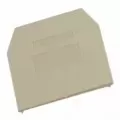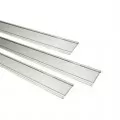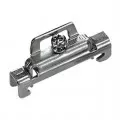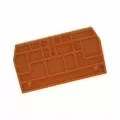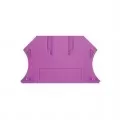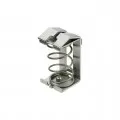OUTLINE:
How Do Terminal Blocks Work: A Comprehensive Guide
 503
503In the intricate realm of electrical engineering and electronics connections and safety are vital. Because they are so user-friendly and efficient terminal blocks stand out among the many components that ensure these fundamental components. This article delves into the physics and operation of terminal blocks to provide a comprehensive understanding of how do terminal blocks work. Along with talking about its various uses and forms, we will also define a terminal block.
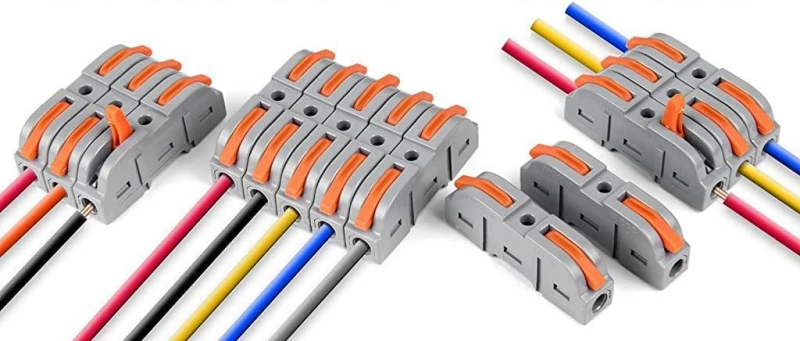
An electrical system's terminal blocks are essential components. They are sometimes referred to as terminal connectors or connection terminals. The main purposes of terminal blocks are to facilitate wiring increase electrical safety and provide stable connections. They typically include an insulating body wire that is fastened in place with screws or clamps and conductive strips.
The primary function of a terminal block is to provide cables with a convenient and safe coupling point. The ability to separate and reconnect circuits easily and without complex equipment or soldering makes this crucial for electrical system maintenance and troubleshooting. Terminal blocks also help to organize the wiring system preventing tangling and reducing the risk of short circuits or electrical fires.
Understanding the purpose of a terminal block in a circuit's mechanical and electrical components is crucial to comprehending its operation. In terms of electrical performance terminal blocks provide a robust connection that can withstand voltage dips and heavy current loads with minimal resistance. They reduce the chance of inadvertent disconnections or damage from vibrations and movement by ensuring that cables are firmly fastened mechanically.
Beyond their core characteristics terminal blocks come in a variety of forms each suitable for a specific application. With so many options one can design unique solutions to meet the requirements of different electrical configurations. These solutions can include push-in and barrier terminal blocks as well as screw-type and spring-cage terminal blocks. There are distinct advantages for each type in terms of ease of installation connection reliability and maintenance needs.
The following article will help us gain knowledge about what is a terminal block and how do terminal blocks work.
What is terminal block: Functionality Applications
Terminal blocks are crucial components of electrical systems that give wire connections a safe, orderly way to join. Investigating the many forms of terminal blocks that might be available is important to know how a terminal block features and its importance. Designed to satisfy certain wishes and applications, every variety has unique traits and advantages. This segment explores the many forms of terminal blocks, increasing our understanding of what a terminal block is and the way it features in unique contexts. This explains to us how do terminal blocks work.
1. Blocks with Screw Terminals
The screw terminal block is one of the maximum popular and extensively applied varieties. They include screws that preserve the cord firmly in the area and offer a robust connection. To firmly clamp the cord, it's miles located into the termination and the screw is tightened. Its dependability and ability to manage heavy modern masses are widely recognized. Distribution packing containers manage panels, and business programs often rent them.
How do screws in terminal blocks operate? Using compressing the cord against a conductive steel surface and tightening the screw, you could prevent vibrations from releasing the cord and create a robust electrical connection.
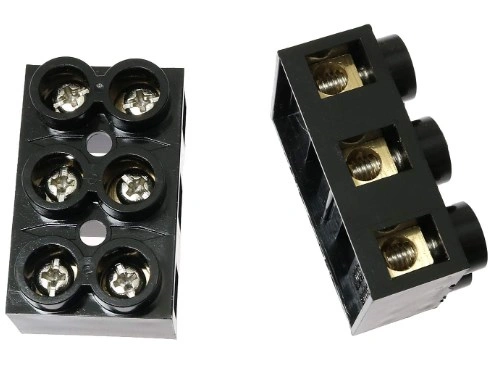
2. Blocks with Spring-Cage Terminals
The wire is held in the vicinity through a spring mechanism in spring-cage termination blocks. As soon as the wire is inserted into the terminal, the spring applies continuous stress to maintain the relationship solid. Considering that this kind secures the wire without the need for any tools, it is preferred for its simplicity of use and speedy setup.
What is the operation of a spring-cage terminal block? Without requiring human tightening, the spring mechanism automatically adapts to the size of the wire to provide a regular connection. it is therefore best for programs requiring frequent wiring changes.
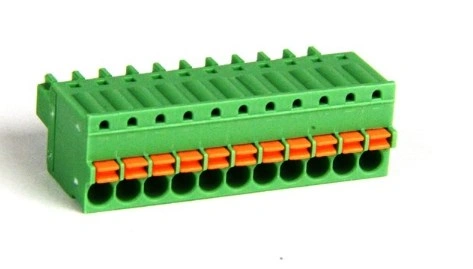
3. Blocks for Push-In Terminals
The layout of push-in terminal blocks makes the twine setup a whole lot less complicated. Just insert the twine into the terminal; a unique clamping mechanism holds it firmly in the area. These blocks are specifically time- and consumer-green, which makes them perfect for repeated or high-extent wiring activities.
What is the operation of a push-in terminal block? Whilst the twine is installed, the clamping mechanism within the terminal instantly grabs it, forming a comfy connection without the need for further tools or tightening.
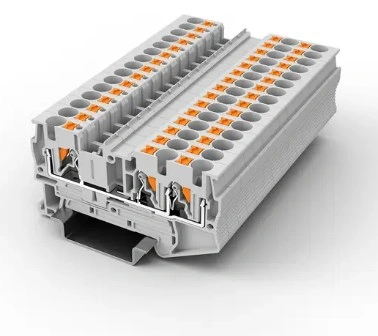
4. Terminal Barrier Blocks
Partitions between terminals in barrier terminal blocks improve safety by stopping unintentional quick circuits. They provide extra security and isolation between connections, which is why they are frequently utilized in programs with high voltage and modern-day tiers.
How do you operate a barrier terminal block? To prevent electrical issues in complicated or high-electricity structures, the barriers bodily divide every terminal, ensuring that wires no longer encounter one another.
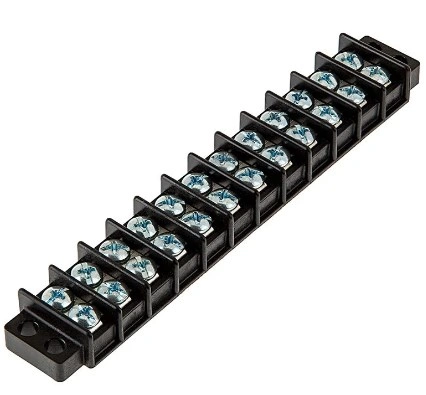
5. Plug-in Terminal Blocks
Wiring sections may be quickly joined and detached thanks to pluggable terminal blocks' plug and socket architecture. For modular structures, in which circuit additives may additionally want to be replaced or maintained on a normal basis, this type is useful.
What is the operation of a pluggable terminal block? The terminal block's plug, which is designed to match right into a socket established on a circuit board or panel, houses the wire connections. The architecture facilitates seamless and speedy wiring connections and disconnections.

6. Blocks for DIN Rail Terminals
Installing terminal blocks on top of things panels and enclosures may be achieved in a uniform and structured manner with DIN rail terminal blocks, that are made to in shape on everyday DIN rails. These blocks might also have fuses, disconnects, and signs, among different matters.
How does a terminal block for a DIN rail operate? As a structural guide, the terminal block is clipped right into a DIN rail. The format makes it easy to install and preserve twine structures in a tidy and compact manner.
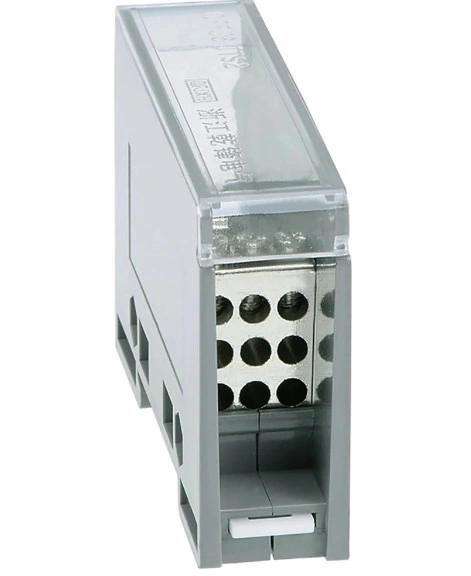
How do terminal blocks work: Mechanisms Applications
Terminal blocks are vital elements of electrical structures due to the fact they offer a neat and safe manner to sign up for wires. Terminal block operation and significance should be understood to recognize them. Analyzing their design, functionality, and varied types that meet awesome desires are all a part of this. With the aid of doing this, we may additionally have a better understanding of what is a terminal block and the way it contributes to cozy and dependable electric connections.
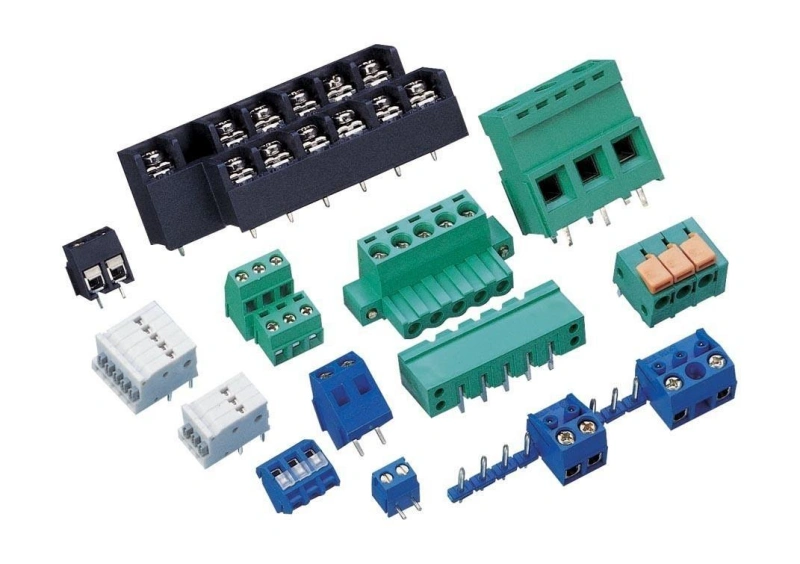
1. Basic Construction and Design
Fundamentally, terminal blocks are made up of many important parts:
- Insulating Body: This offers structural support as well as electrical insulation and is often composed of plastic or ceramic.
- Conductive Strip: This metal strip, which is embedded in the insulating body, transmits electricity between wires that are linked.
- Wire Clamping Mechanism: To ensure a secure connection, a screw, spring, or other mechanism is used to keep the wire in place.
A terminal block's important motive is to provide a short and comfortable manner to enroll in and detach wires without the want for soldering. Because of this, terminal blocks are essential for persevering with renovation and troubleshooting in addition to preliminary wire configurations.
Let us now check the operation of terminal blocks to know how does a terminal block work.
2. The Operation of Terminal Blocks
Inserting the Wire: The end of the wire is stripped of its insulation before it is put into the terminal block. The conductive strip inside the terminal block must come into touch with the striped section.
- Clamping Mechanism Engagement: Depending on the kind of terminal block, one of the following techniques is used to hold the wire in place:
- Screw Terminal Blocks: To clamp the wire to the conductive strip, it is positioned beneath a screw and tightened. The screw's pressure guarantees a strong electrical connection.
- Spring-Cage Terminal Blocks: A spring mechanism mechanically clamps the wire in place after it is put into the slot. Even in vibration-prone areas, the spring's steady pressure on the wire guarantees a secure connection.
- Push-In Terminal Blocks: An internal clamping mechanism firmly grasps the wire after it is put into the terminal. This kind is made to be quick to install and simple to operate.
- Barrier Terminal Blocks: These are screw-type terminal blocks that include dividers between each connecting point to improve safety and avoid short circuits.
- Pluggable terminal blocks: Easily connect or disconnect the complete block of connections from a socket thanks to its plug and socket architecture.
- DIN Rail Terminal Blocks: These may be arranged and modularly installed in control panels and enclosures by mounting them on ordinary DIN rails.
- Electrical Connection: With the wire securely fastened, it encounters the terminal block's conductive strip. The circuit can conduct electricity when this strip is linked to additional wires or parts. Minimal resistance and dependable conductivity are guaranteed by the design.
- Disconnection: The clamping mechanism may be turned off to make it easier to remove the wire for maintenance or reconfiguration. Because of this, terminal blocks are especially helpful in settings where frequent wiring modifications are required.
Terminal block utilization: Benefits
To acknowledge how does a terminal block work, knowing its benefits is also important, therefore benefits are as follows:
- Smooth to use: Terminal blocks make it less difficult to attach and detach cables, which makes them ideal for first installs in addition to ongoing protection.
- Protection: By way of reducing the possibility of unintended disconnections and quick circuits, the insulating frame and strong clamping mechanisms enhance preferred protection.
- Versatility: Terminal blocks come in a selection of shapes and combos to suit an extensive range of wire diameters and packages.
- Agency: By way of minimizing muddle and retaining wire systems ordered, terminal blocks facilitate the control of tricky circuits.
Electrical Considerations
To guarantee efficiency, dependability, and protection even as deciding on and utilizing terminal blocks in electrical structures, there are numerous vital factors to recollect. Comprehending these variables helps nicely- knowledgeable selection-making and enhances the functionality of terminal blocks across diverse programs. the main electrical factors for terminal blocks are listed under:
1. Current Rating
One of the most critical matters to not forget while deciding on a terminal block is the present-day score. It indicates the best present-day that the terminal block can handle without failing or overheating.
- The way to determine: The manufacturer will usually supply the cutting-edge rating, which must be adjusted to the circuit's specifications. If a terminal block is overloaded over its rated capability, there may be an excessive construction of warmth, possible fireplace dangers, and connection failure.
- Regular Values: For tiny, low-strength applications, cutting-edge ratings can range from some amperes to masses of amperes; for industrial and excessive-strength applications, they can reach masses of amperes.
2. Rating for Voltage
The voltage rating serves as a safety indicator of the very best voltage that can be furnished to the terminal block without strolling the threat of arcing or insulation breakage.
- Significance: For each safety and overall performance, it's far vital that the voltage rating of the terminal block be greater than the maximum voltage allowed in the application.
- Application Matching: For low-voltage applications (like home circuits) vs high-voltage applications (like commercial machinery), make use of terminal blocks with the right voltage scores.
- Type of Connection
The terminal block's dependability, simplicity of installation, and renovation are all inspired by way of the connection type.
- Standards and Protection of the Environment
Terminal blocks are assumed to be appropriate for the specified utility environment using standards compliance and environmental protection.
- Durability and Mechanical Strength
Long-time dependability depends on mechanical power and durability, in particular in demanding packages.
Mechanical Consideration
To guarantee dependable connections and convenience of use, consider the following mechanical criteria while choosing terminal blocks:
1. Method of wire termination screw terminals: Strong and lengthy-lasting, even though equipment is needed.
- Spring-Cage Terminals: Vibration-resistant and device-free. Push-In Terminals: For huge volume installs, these are brief and device-free
- DIN Mounting fashion Rail Mounting: standardized, replaceable, and adaptable. Panel mounting: The solid and cozy setup of manipulated panels.
- Density of Connections high Density: greater difficulty to get right of entry to however saves area.
- Sturdiness and Resistance to Environment substances: choose substances that are resistant to warmness, chemical substances, and effects. Environmental scores: verify the proper resistance to moisture and dust (e.g., IP scores).

Safety Rating
To guarantee dependable and cozy operation, it is miles critical to take essential safety rankings into account whilst choosing terminal blocks. The maximum voltage and present-day that the terminal block can withstand without strolling the hazard of electrical arcing, overheating, or hearth threats is indicated by using the voltage and present-day rankings. The temperature score guarantees that the terminal block can characteristic effectively inside a given temperature range, whilst the Ingress protection (IP) score assesses resistance to dirt and moisture.
The material's resistance to catching hearth is indicated by using the flammability score, such as UL94 standards. Certifications from businesses (such as UL, IEC, CSA, and CE) attest to adherence to safety policies. Moreover, the terminal block is protected against harm by using the short-circuit present-day score (SCCR), which guarantees it can tolerate fault instances. together, those rankings guarantee the safety and dependability of the terminal block in numerous packages.
Design Consideration
For satisfactory effects, more design issues are important when selecting terminal blocks. Future adjustments can be without difficulty accommodated with the aid of the flexibility and modularity that enable easy customization and extension. Features that make setup and preservation simple, such tool- unfastened options and unambiguous labeling, increase productiveness and keep downtime.
The terminal block's mechanical robustness ensures its endurance below physical pressure, and appropriate mounting techniques (consisting of DIN rail, panel, or PCB mounting) provide a solid and comfy setup. Lastly, consider connection density to strike a balance between space efficiency and simplicity of preservation and troubleshooting. Together, these factors improve the lifetime and performance of terminal blocks in electrical structures.
How to buy the right terminal block
Choosing the appropriate terminal block requires considering many important factors. After you recognize what is a terminal block, know the right one.
- Electric specs: To keep away from screw-ups, healthy your machine's voltage, and contemporary specs.
- Connectivity method: For simplicity and dependability, use screw, spring-cage, or push-in terminals.
- Mounting fashion: Relying upon your configuration, use PCB, panel, or DIN rail mounting.
- Environmental Resistance: verify that the temperature and IP scores of the terminal block are appropriate.
- Material and Sturdiness: Pick out robust, flammability-resistant substances that are durable.
- Installation Ease: For simple maintenance, pick out solutions that do not require a device and have clear labeling.
- Modularity: pick out designs that are modular for destiny adaptability and extension.
Chipsmall shopping online on the collection of the above advantages, a variety of choices, from Hong Kong, China, began in 2004, adhere to the quality!

FAQs
Q: What is a block on the terminal?
An insulated, modular tool referred to as a terminal block is used to systematically join and set up numerous electric cables.
Q: How do terminal blocks work?
With the aid of securely fastening wires utilizing a selection of connection techniques, a terminal block permits reliable and secure electric signal transmission. >> How to Use a Terminal Block
Q: What varieties of terminal block connection techniques are there?
The 3 primary varieties—screw, spring-cage, and push-in terminals— each have precise advantages in terms of dependability and person-friendliness.
Q: In which terminal block should I choose for my software?
Consider the electrical rankings (voltage and cutting-edge), mounting style, connecting method, resistance to the surroundings, the longevity of the fabric, simplicity of setup, and flexibility.
Conclusion
For your electrical structures to be safe, reliable, and powerful, choosing a suitable terminal block is important. You could pick the terminal block that first-class fits your demands by knowing how they performs and contemplating vital aspects including electrical scores, mounting patterns, connecting strategies, environmental resistance, cloth durability, ease of set up, and modularity. Via taking these elements into account, you could choose terminal blocks that enhance the overall functionality and lifespan of your electrical structures further to adhering to protection regulations. Hope you got an idea of how do terminal blocks work with a clear recognition of what is a terminal block.

Disclaimer: The views and opinions expressed by individual authors or forum participants on this website do not represent the views and opinions of Chipsmall, nor do they represent Chipsmall's official policy.

share this blog to:


